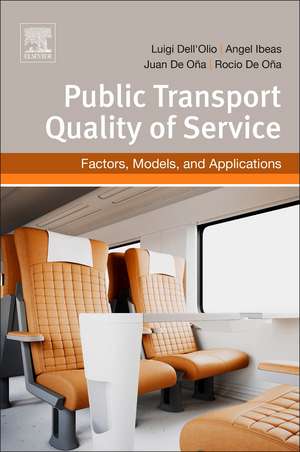Public Transportation Quality of Service: Factors, Models, and Applications
Autor Luigi Dell´Olio, Angel Ibeas, Juan de Ona, Rocio de Onaen Limba Engleză Paperback – 28 sep 2017
The book also examines data mining approaches such as decision trees and neural networks, showing how to involve the public in the decision-making process to create policies that encourage public transport demand. Measuring passenger’s views on public transportation is of critical concern to promote wider transit use in cities around the world.
- Includes insights from both theoretical and practical points of view for both researchers and practitioners
- Features case studies in each chapter that apply models discussed
- Helps readers develop and design their own studies for measuring quality of service
- Shows how to include perceived quality in contracts
- Provides access to the survey formulas and data to better enable implementation of models
Preț: 599.19 lei
Preț vechi: 785.51 lei
-24% Nou
Puncte Express: 899
Preț estimativ în valută:
114.67€ • 119.27$ • 94.67£
114.67€ • 119.27$ • 94.67£
Carte tipărită la comandă
Livrare economică 07-21 aprilie
Preluare comenzi: 021 569.72.76
Specificații
ISBN-13: 9780081020807
ISBN-10: 0081020805
Pagini: 242
Dimensiuni: 152 x 229 x 17 mm
Editura: ELSEVIER SCIENCE
ISBN-10: 0081020805
Pagini: 242
Dimensiuni: 152 x 229 x 17 mm
Editura: ELSEVIER SCIENCE
Public țintă
1) Researchers and graduate students in Transportation, Urban Planning, and Civil Engineering, 2) Practitioners such as Transportation Economists, Engineers, Geographers, Operations Managers, and Planners, 3) Transportation governmental policy makersCuprins
1. Introduction2. How to study the perceived quality in public transport3. Public participation techniques and choice of variables4. Surveys5. Geo-social differences in the perception of quality6. Most basic methods7. Methods based on random utility theory8. Structural Equations Models9. Data mining approaches10. Beyond perceived quality: desired quality11. Inclusion of quality criteria in public transport service contracts
